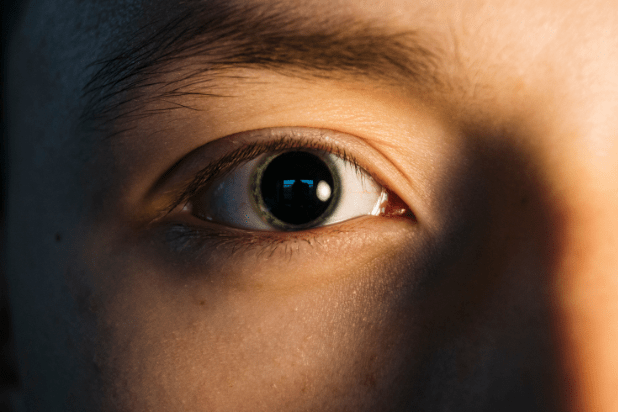How Long Does Eye Dilation Last?

Eye dilation involves using eye drops to enlarge the pupil, allowing eye doctors to get a better view of the back of the eye. A dilated fundus examination allows the doctor to assess the eye's health, manage any current eye disease, and look for any potential eye or systemic disease. The duration of your eye dilation can vary depending on the type of medication used, the color of your iris, and the dosage. Eye dilation is a very important part of eye care. It is recommended annually or biannually for healthy patients and, more often, in patients with certain eye conditions.
Understanding the process of eye dilation
Eye dilation, also called mydriasis, widens the pupil, which is the black circular opening at the center of the eye, surrounded by the colored part called the iris. The dilation is performed using specialized eye drops called mydriatics. Mydriatics work by relaxing the muscles that control the size of the pupil or by stimulating the muscles that open the pupil wider. Eye dilation can be compared to a window, you have a larger field of view through a large window compared to a small window. The most common medications used for dilation are tropicamide and phenylephrine.
Importance of eye dilation
Eye doctors use pupil dilation for three main reasons. First, it allows them to obtain a clearer and more comprehensive view of the eye's internal structures, including the retina, optic nerve, lens, and blood vessels. This enables early detection and management of eye disease. Second, eye dilation may temporarily paralyze the eye's focusing system. This is often done in pediatric exams but may also be necessary before LASIK surgery or to best determine one’s eyeglass prescription. Third, pupil dilation can be used to manage pain and prevent other conditions in patients with uveitis.
The most common eye conditions managed with an eye dilation include:
- 1. Glaucoma: Dilation allows for a thorough examination of the optic nerve and the eye's drainage angle so the doctor can diagnose and monitor glaucoma. Glaucoma is a group of eye diseases characterized by damage to the optic nerve, which can result in a non-painful loss of one’s peripheral vision. Patients are unlikely to know they have glaucoma unless a doctor views the optic nerve.
- 2. Diabetic retinopathy: Patients with diabetes can experience significant vision loss as a complication of diabetes. Dilation enables the doctor to assess the retina for signs of diabetic retinopathy, which affects the blood vessels, resulting in bleeding and swelling. If not managed and treated correctly, diabetes can result in blindness.
- 3. Age-related macular degeneration (AMD): Dilation allows the doctor to detect the signs of AMD, which is a progressive condition that affects the macula, the central part of the retina responsible for sharp, central vision.
- 4. Retinal detachment: A dilated exam allows the doctor to detect retinal tears, holes, or detachments, which require prompt treatment to prevent permanent vision loss.
- 5. Cataracts: Eye dilation is the best way for a doctor to assess the type and severity of your cataracts.
- 6. Hypertensive retinopathy: A dilated pupil allows your doctor to view the retinal blood vessels to diagnose and monitor hypertensive retinopathy, a condition caused by high blood pressure that can lead to vision changes and loss.
- 7. Optic nerve disorders: Any disorder of the optic nerve head, including an eye stroke, optic neuritis, optic nerve drusen, and optic nerve tumors, can be diagnosed and best assessed with an eye dilation.
How long does it take for eye dilation to wear off?
The duration of the eye dilation depends on several factors, including the type and concentration of the medication used, the patient’s age, overall health, and response to the medication. Just like any other medication, we all respond differently. In general, dilation effects begin to wear off within a few hours, with pupils returning to their standard size within 4 to 8 hours for most people. However, dilation may persist longer with certain medications or in individuals with specific medical conditions. Children can be dilated with a more powerful medication to determine if they need glasses, and their pupils may be dilated much longer.
What Not to Do After Eye Dilation?
After you dilate your eyes, it's important to take certain precautions to ensure your comfort and safety while the effects of the dilation wear off. Though driving is okay, eye dilation can cause blurred vision and increased sensitivity to light, so extra diligence is required. Some patients may feel uncomfortable and prefer to bring a driver.
It is also okay to use computer screens and digital devices; however, it may be more complex, and some patients may prefer to avoid them. Light sensitivity is to be expected, so you should protect your eyes from excessive brightness or glare. Wear sunglasses or tinted eyeglasses outdoors or in brightly lit environments to reduce discomfort.
Side effects of eye dilation
Common side effects of eye dilation include:
- 1. Blurred vision: Dilation can cause temporary blurriness, making it difficult to see objects at close distances. This blurriness is because more light enters the eye and affects how images focus on the retina.
- 2. Sensitivity to light (photophobia): Dilated eyes are more sensitive to light, leading to more discomfort when exposed to bright lights or sunlight.
- 3. Difficulty focusing (accommodation): Due to the change in pupil size and the way light enters the eye, focusing on nearby objects or adjusting your focus between different distances may become difficult, making reading or using electronic devices more challenging.
- 4. Headache: Sometimes, eye dilation may trigger mild headaches, particularly if exposed to bright lights.
Tips for overcoming the side effects of eye dilation
Here are some tips to help alleviate the common side effects:
- 1. Wear sunglasses: Protect your eyes from bright lights and sunlight by wearing sunglasses with UV protection. Sunglasses will reduce your sensitivity to light (photophobia) and minimize the discomfort.
- 2. Avoid driving: If possible, refrain from driving until your vision returns to normal.
- 3. Rest your eyes: Give your eyes a break by avoiding activities that require prolonged concentration, such as reading, computer work, or using electronic devices.
Conclusion
Eye dilation is a necessary procedure that allows eye doctors to assess the health of your eyes. While dilation may cause temporary side effects such as blurred vision, sensitivity to light, and discomfort, these effects typically subside within a few hours. Annual eye examinations, including dilation, when necessary, are essential to maintain good eye health and detect any potential problems early.
